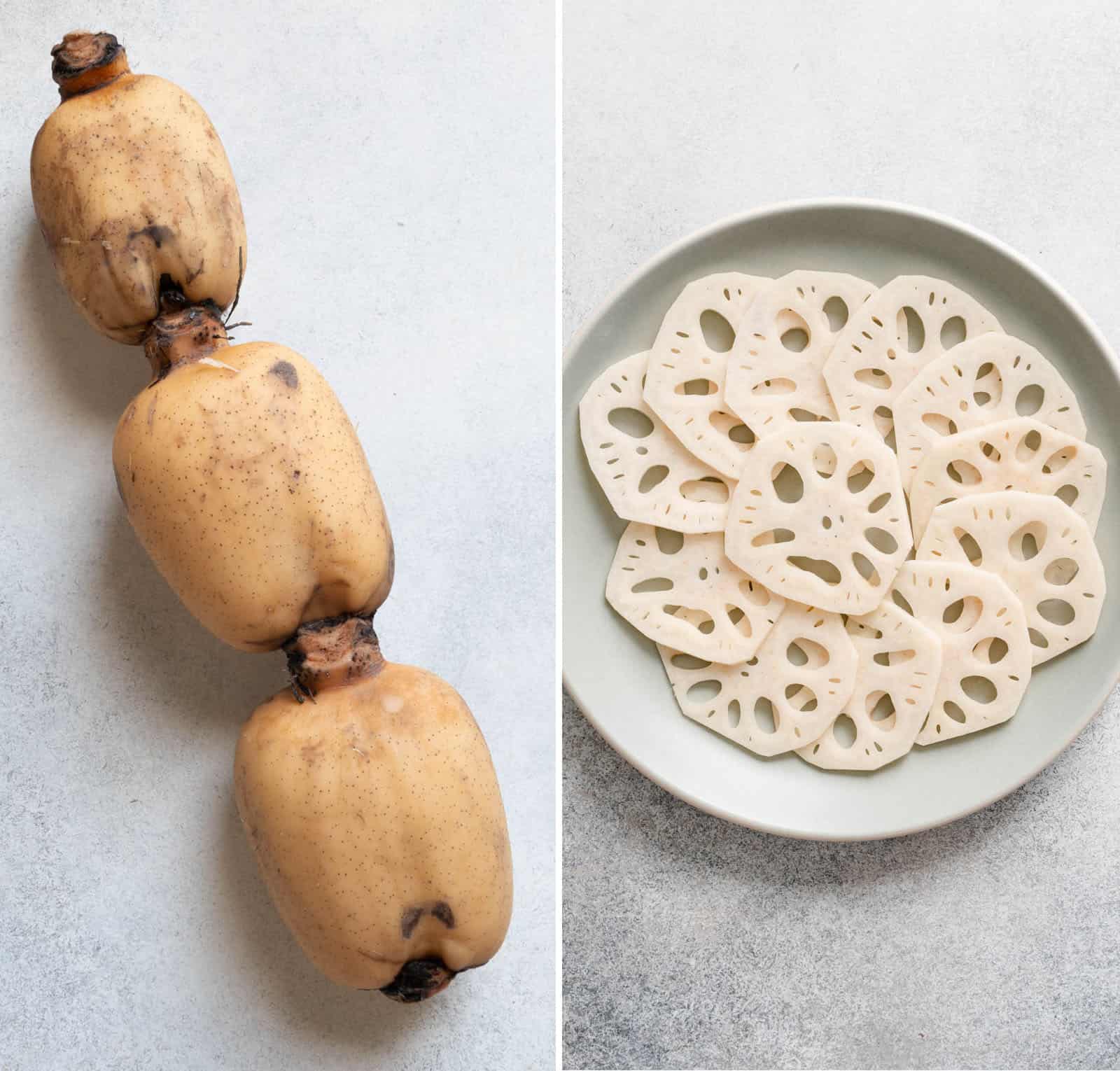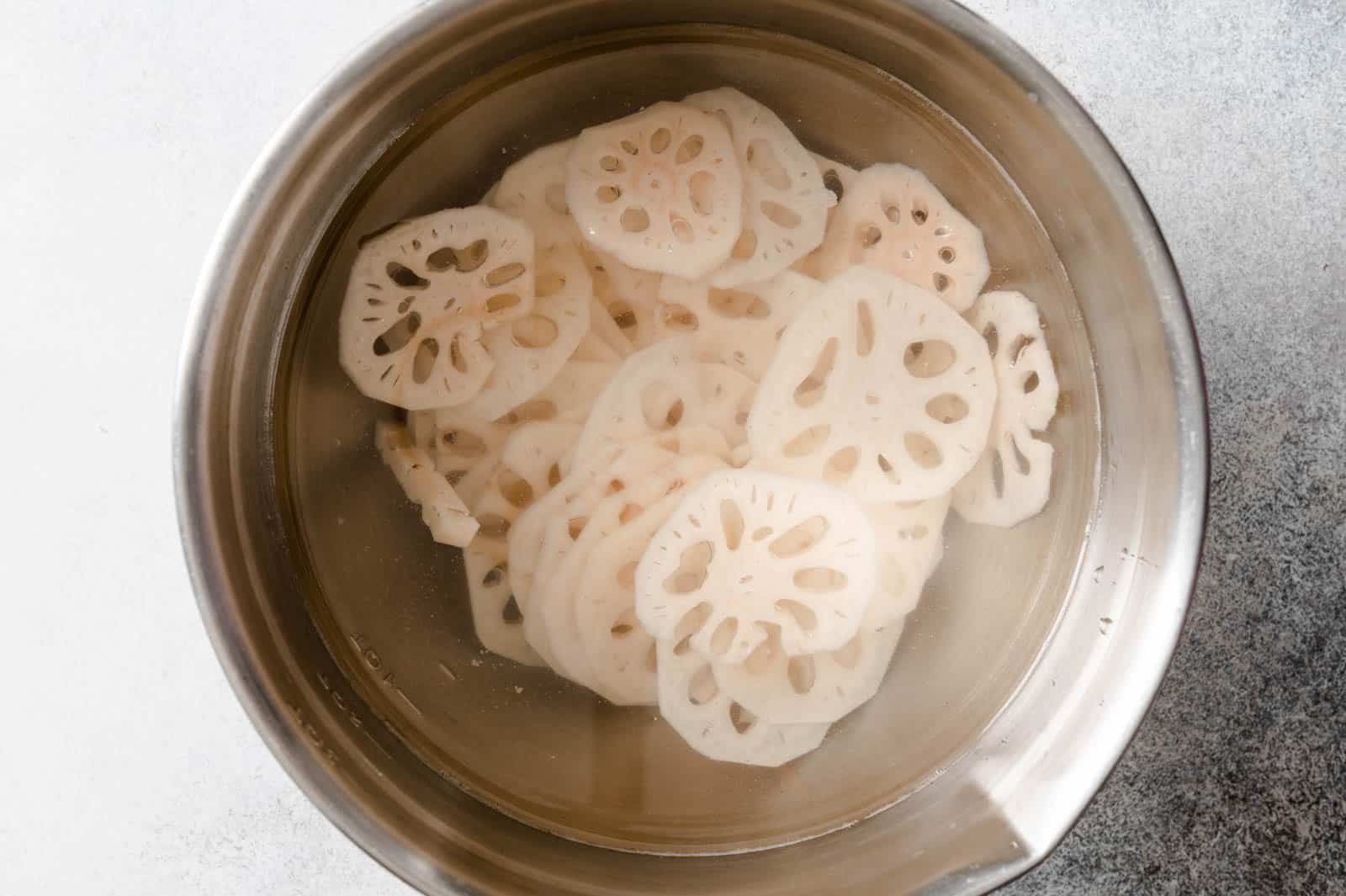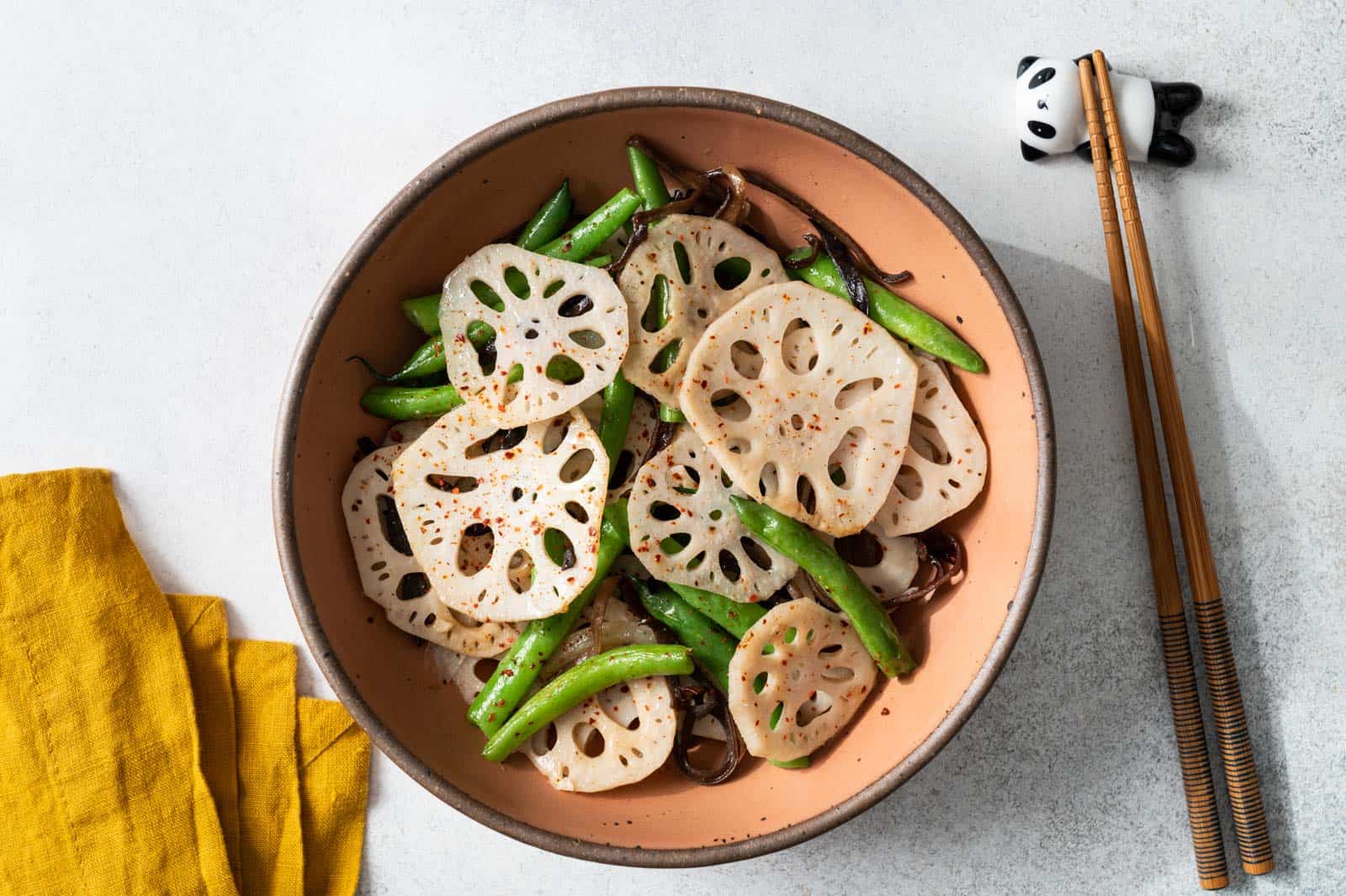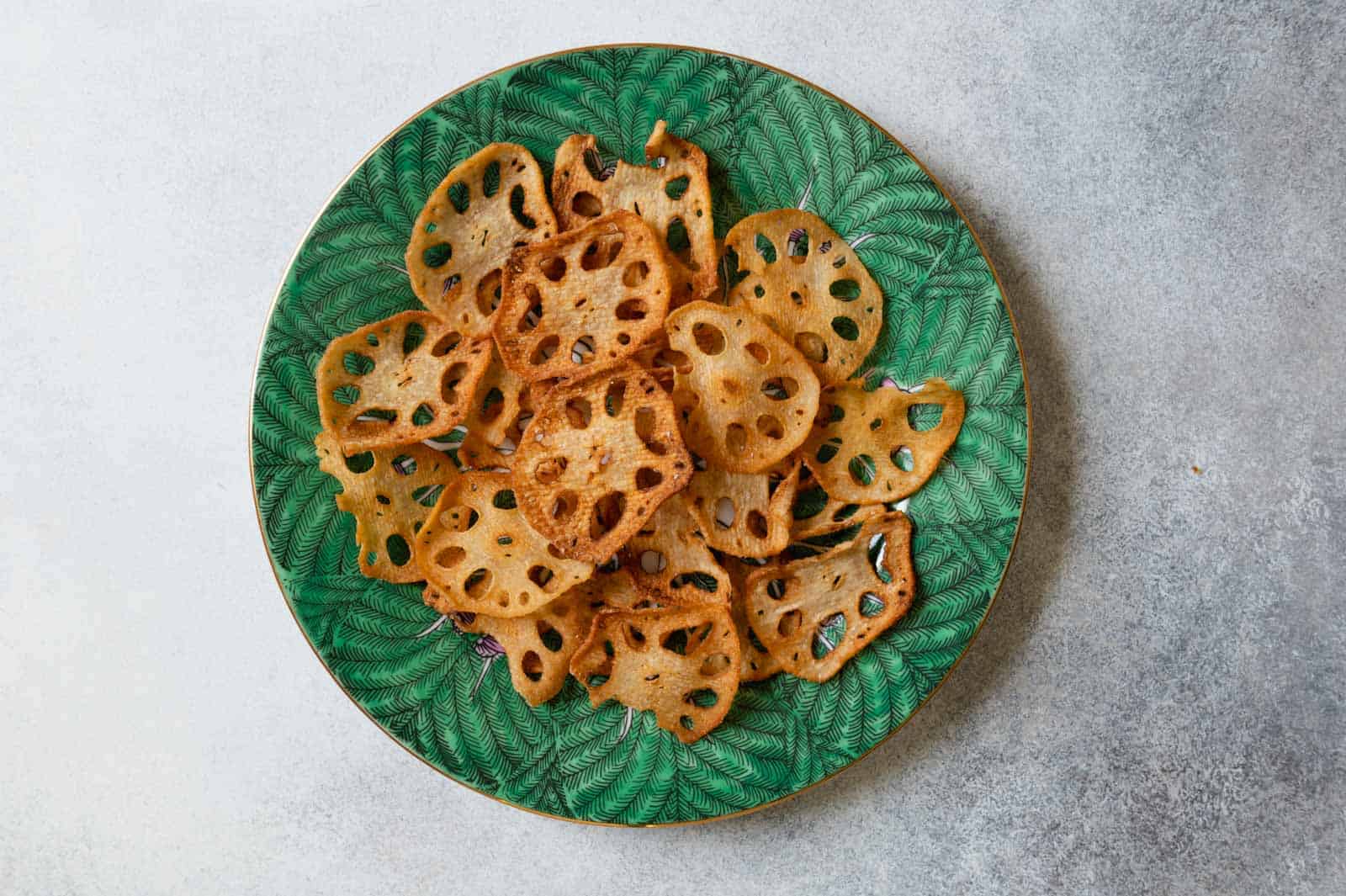
WHAT IS LOTUS ROOT?
The lotus root is a rhizome of the lotus plant (Chinese 蓮藕/莲藕; 蓮根/れんこん or Renkon in Japanese). According to Diane Morgan root (2012), this aquatic plant is native to Asia, the Middle East and Australia and has been cultivated for over 2000 years. As a rhizome, the lotus root grows horizontally in the mud of flooded fields or ponds. When you dig them out of the mud, the roots resemble sausage links, with 3 to 6 tuberous sections that connect together. They have a starchy and crunchy texture and are high in fiber and potassium.
SYMBOLISM OF THE LOTUS PLANT
The lotus root is a part of the lotus plant that is of great importance in Buddhist culture. As Pamela Chia explains in her cookbook, Wet market to the table (2019): “The lotus is revered for its ability to rise from mud and bloom beautifully, symbolizing the process of enlightenment.”

HOW TO PICK AND STORE LOTUS ROOT
The roots are usually imported from Asia (often China or Japan). You can usually find lotus roots in Asian grocery stores, especially those that sell Chinese food.
When picking lotus roots, look for roots with light pink/brown skin that are free of major blemishes. If the skin looks completely brown (as you can see in the cover photo here), this is a sign that the root is well past its prime. Small brown spots are okay though, as you can see in the photo above.
Generally, farms rinse the vegetables before shipping. If you see mud on the outside, don’t be alarmed. Just rinse the roots thoroughly before cooking with them.
I usually put lotus roots in plastic bags and then put them in the fridge. They can be kept for up to 2 weeks.
HOW TO PREPARE LOTUS ROOT
Rinse the exterior. If several segments are still intact, snap them at the junction. Then cut off the joints at the ends; They are quite tough and difficult to eat. Use a vegetable peeler (affiliate link) to peel off the skin. If the root goes bad and turns brown, cut off those browning parts.
Cutting the root reveals a threadlike sap that vaguely resembles the silk of spider webs. I think the juice is fun to eat, but it might feel weird for some people. I recommend thinly slicing the root crosswise to reveal the lace pattern inside. Thinly licing the lotus root makes it easier to cook. Also, you won’t be able to see the stringy sap.
However, if you want to make lotus root soup, you’ll probably want to cut the root into 1 ½ to 2-inch slices, then quarter each slice for smaller pieces.

Lotus root oxidizes very quickly when cut open. To keep the root from browning too quickly, soak the roots in a bowl of water and a good squeeze of lemon juice. Alternatively, my mom says soaking the root in salt water also works. You can also wash away some of the starch during the soaking process.
HOW TO EAT LOTUS PLANTS AND ROOTS
In Chinese cuisine, almost all parts of the lotus plant are used in cooking. The seeds can be used to make soups or made into a sweet paste (蓮蓉). Lotus seed paste is often used to fill mooncakes or steamed buns (蓮蓉包). Lotus leaves can be dried and used as a topping for the classic dim sum dish 糯米雞 (aka no mai gai or lo mai gai), sticky rice wrapped in leaves. Even the tender stalks can be peeled and fried. However, the most commonly eaten part of the lotus plant is the roots.

My favorite way to cook lotus roots is by sautéing them with other vegetables. In the skillet above, I sautéed onions in oil for about a minute. Then I added green beans, lotus root and rehydrated wood ears. Fry them for a minute. Then add several tablespoons of water to the wok, cover with a lid and cook for 2 to 3 minutes. The water creates steam that cooks the vegetables and prevents the vegetables from burning. Uncover the wok and cook for another minute. Season with salt and oyster sauce (or your favorite pan sauce). Cooking the lotus root this way allows the vegetable to retain a slight crunch (not unlike sautéing thinly sliced potatoes for a few minutes).

I also like to fry sliced lotus roots in oil to make chips. After thinly slicing the root, soak it in salted water for 5 to 10 minutes. Drain the slices well and dry with towels. Heat some oil in a wok or pot to 190 °C. Add the lotus root slices in batches and fry until golden brown. Remove from the oil and continue frying the remaining slices. Season the fried roots with salt and your favorite dry spices. The chips have a nice earthy flavor.

